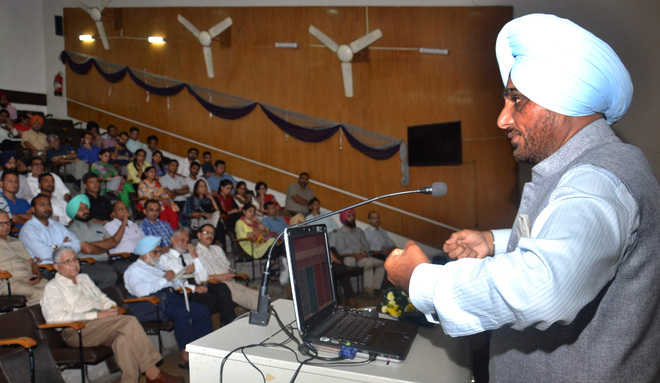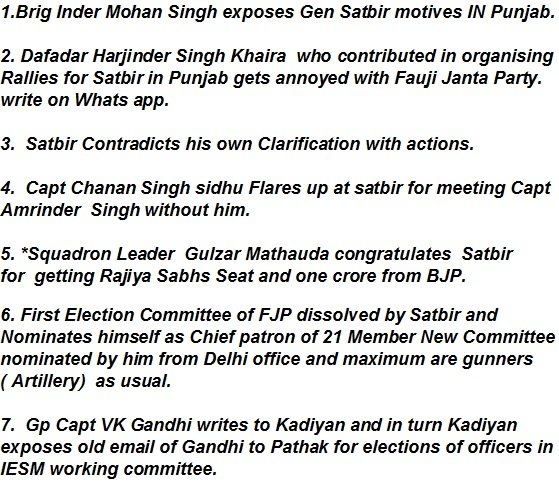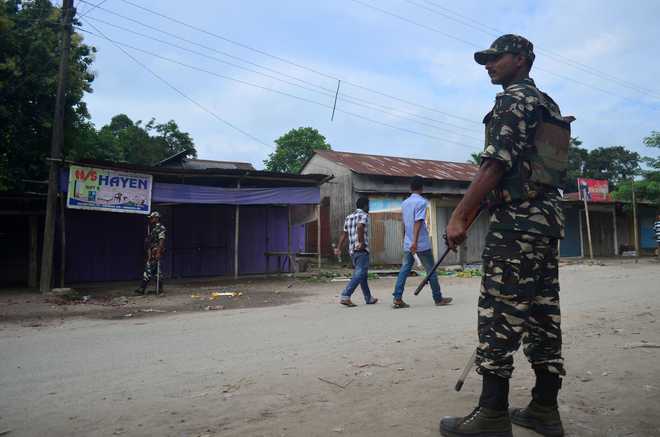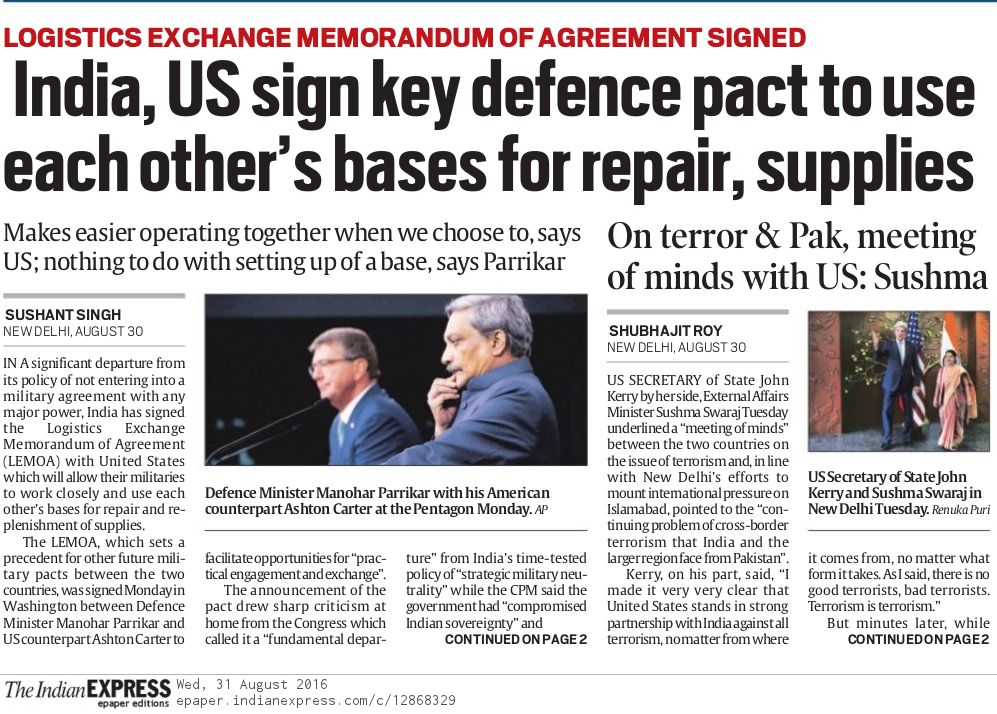 FRIEND OR FOE? Taliban is being nurtured in numerous sanctuaries within Pakistan.
FRIEND OR FOE? Taliban is being nurtured in numerous sanctuaries within Pakistan.THIS year marks the 20th anniversary of the fall of Kabul to the Taliban and its subsequent expansion to almost all parts of Afghanistan with Pakistani and Al-Qaeda assistance. It also marks the 15th anniversary of 9/11 and of the Taliban “defeat” and subsequent withdrawal into Pakistan. However, the Taliban is today a potent and deadly force, which as per a recent US official report, is in “control or influence” in almost 35 per cent of Afghan territory, up by about 5 per cent over the past year. There is little doubt that the US and its NATO allies and the Afghan security forces have failed in their military objective of rooting out the Taliban.The failure on the military front has compelled the Afghan authorities and the international community to attempt a political reconciliation between the Taliban and the Afghan government. That endeavour is going nowhere. The Taliban is in no hurry to engage a weak and politically unconsolidated Kabul under the current National Unity Government led by President Ashraf Ghani though it desires formal international acceptance. For the latter purpose, it has softened its position on gender issues. The loss of its founder Mullah Omar and his main successor Mullah Akhtar Mansour have not diluted its attachment to the ideal of an Islamic Emirate which casts doubts on its interest in sharing power under Afghanistan’s Islamic Republic constitution.Why has the situation come to this sorry pass? Why did the US and its allies fail to effectively neutralise the Taliban and the Afghan political class fail to establish a consensus that would have driven the Taliban to the social and political margins? Above all, are there any lessons for India in the developments that have taken place in Afghanistan in the past 15 years?The failures of both US policy in Afghanistan and of Afghan political actors beginning with former President Hamid Karzai have been many. The US failed to recognise that the Taliban had the potential to become a factor of continuing instability in Afghanistan. This was mainly because the purpose of its war in Afghanistan was to so emasculate the Al-Qaeda that it could never again launch a major operation on the US mainland or US interests worldwide. In this it has largely succeeded but at the cost of allowing Pakistan to nurture the Taliban in numerous sanctuaries within the country. It is also true that the US had per se no problems with the Taliban. Its view till 9/11 was that the Taliban was an authentic Afghan group that was a factor of stability. It is ironic that after two decades, Taliban participation is being considered necessary for stability in Afghanistan. The fact that the Taliban has killed over 2,000 US soldiers is simply forgotten.The Afghan political class post the Taliban “defeat” had the formidable task of healing the wounds of almost three decades of civil conflict and of navigating through endemic ethnic cleavages and theological and ideological dissensions. It did not succeed in meeting these grave challenges. However it is also a fact that a damaged body, social and political, needs space to begin the processes of healing and Pakistan through the Taliban did not provide Afghanistan that space.Pakistan’s historic fear is of Indian encirclement through an India-friendly Afghanistan government. That this apprehension is grossly exaggerated has been of little consequence to Pakistani security policy controllers in the army. It has however led to an unyielding desire to exercise effective influence over Kabul’s engagement with India. For the five years of Taliban rule, Pakistan was assured that India would have no role in Afghan affairs. It simply wants that kind of assurance again.The establishment of an interim administration under Karzai with key Northern Alliance figures, with whom India had an excellent understanding, rang alarm bells in Rawalpindi. Karzai diligently sought to dispel Pakistani fears of allowing India space to use Afghanistan for fomenting trouble. But he was unwilling to give Pakistan a veto over his country’s India policy. Pakistan wanted just nothing less. This contributed to Pakistan fully sustaining the Taliban to ensure that Kabul was unable to put in place or invigorate state institutions, particularly in the Pushtoon-dominated areas in the western and southern parts of the country.The US was unwilling to “drain the Taliban swamp” in Pakistan and fought it largely on Afghan territory, including through airstrikes that resulted in substantial collateral loss of life and property. This diminished Karzai who appealed to the Taliban for direct negotiations. The Taliban turned a deaf ear with quiet Pakistani encouragement. Karzai’s relations soured both with the US and Pakistan as he helplessly watched the neighbour’s interference through Taliban that was acting as its virtual proxy.Immediately on assuming office, Ashraf Ghani reached out to Pakistan, including through an unprecedented gesture of calling on the Pakistan army chief in his office. He publicly, though indirectly, signalled his willingness to downgrade ties with India, especially in the security sector. In return, he sought Pakistan to use its influence to control Taliban violence and bring it to the negotiation table. The US, and more significantly China, asked it to do the same. Pakistan did not heed the first request but did arrange to get a group of the Taliban to meet with Afghan representatives on its soil. When the Afghans asked for assurances that the representatives had the authority of Mullah Omar, it revealed that the Afghan leader had been long dead though all this while this crucial fact was not revealed to Kabul. That broke Ghani’s trust. He told a NATO summit in Warsaw last month, “Our regional initiatives with neighbours are beginning to yield significant cooperative dividends. The clear exception is with Pakistan—despite clear commitments to a quadrilateral peace process their dangerous distinction between good and bad terrorists is being maintained in practice”. On other occasions, his language on Pakistani interference has been more robust.The critical question is could Kabul have done better despite Pakistan using the Taliban as its proxy? Perhaps yes; but it certainly could not have stabilised the country as long as the contaminant continued to uninterruptedly flow which it would do even now under the new Taliban chief Haibatullah.The lesson for Afghanistan and the US is that stability will elude the country as long as Pakistani intrusiveness is not eliminated. That has to be done by raising the costs of interference for Pakistan. Therein lies a lesson for India in J&K. —The writer is a former Secretary, Ministry of External Affairs














































































